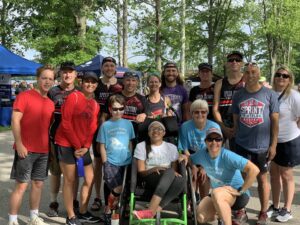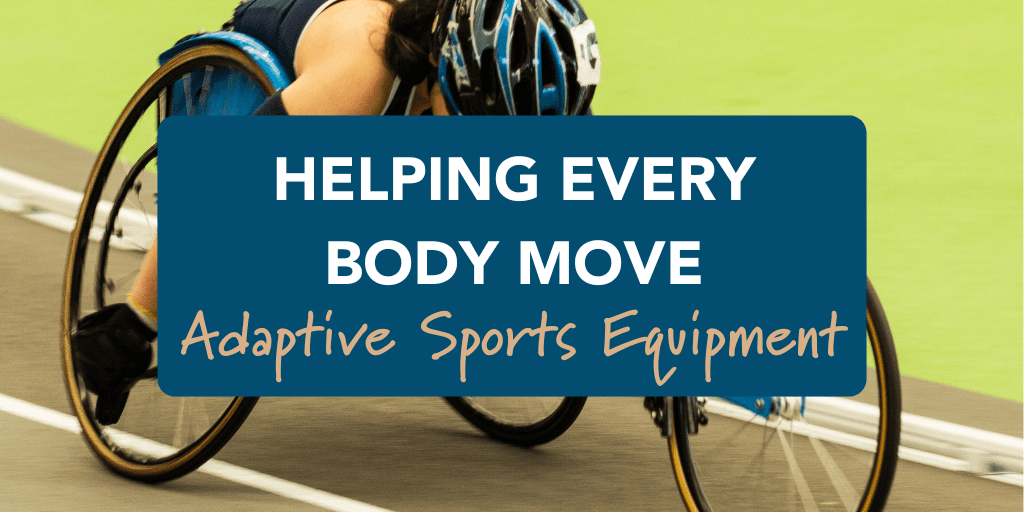When we think of sports, we often picture speed, strength, and competition. However, at its core, movement is about something more: freedom, joy, and connection. For individuals with disabilities, access to that experience hasn’t always been guaranteed. That’s why adaptive sports equipment—and events like our Run, Walk, Roll 5K and 10-Mile race—are so important.
Continued innovation in adaptive sports equipment has meant that movement is becoming more accessible for individuals with disabilities. Racing wheelchairs, for example, are wheelchairs engineered for speed and efficiency, with lightweight frames, aerodynamic design, and customized seating that allows athletes to maximize control during competitive events. All-terrain walkers are another kind of adaptive equipment, built with larger, more durable wheels and reinforced frames to help users move on uneven outdoor surfaces. This helps provide stability and independence for those who need mobility support on trails or grass.
Handcycles are alternative for individuals with limited or no use of their lower limbs; these three-wheeled cycles are powered by the arms for both recreational and competitive use. A combination of adaptive tools and intentional program design allow individuals with disabilities to engage in physical activity, build confidence, and experience the benefits of movement in community settings.
Through the Joseph Maley Foundation’s Fitness program, community members can borrow adaptive racing chairs and triathlon equipment—breaking down barriers so every athlete has the chance to participate.

This movement isn’t just important–it’s transformative physical activity can strengthen muscles, improve coordination and cardiovascular health, and even reduce chronic illness risk. Beyond the body, physical activity can improve mental health. Regular movement can help ease symptoms of depression and anxiety, build self-confidence and promote independence. Adaptive equipment plays a powerful role here, opening possibilities for activity that would otherwise not be achievable.
Equally empowering is the growing visibility of athletes with disabilities in sports. When we see people of all abilities represented on courts, fields, and tracks–sometimes made possible by adaptive equipment–it changes the narrative and tells a story of strength, connection, and possibility. This representation of athletes of all abilities creates connection, challenges outdated assumptions, and encourages others to participate. This visibility reminds us that sports belong to everyone, and every body has the right to move.
SOURCES:
